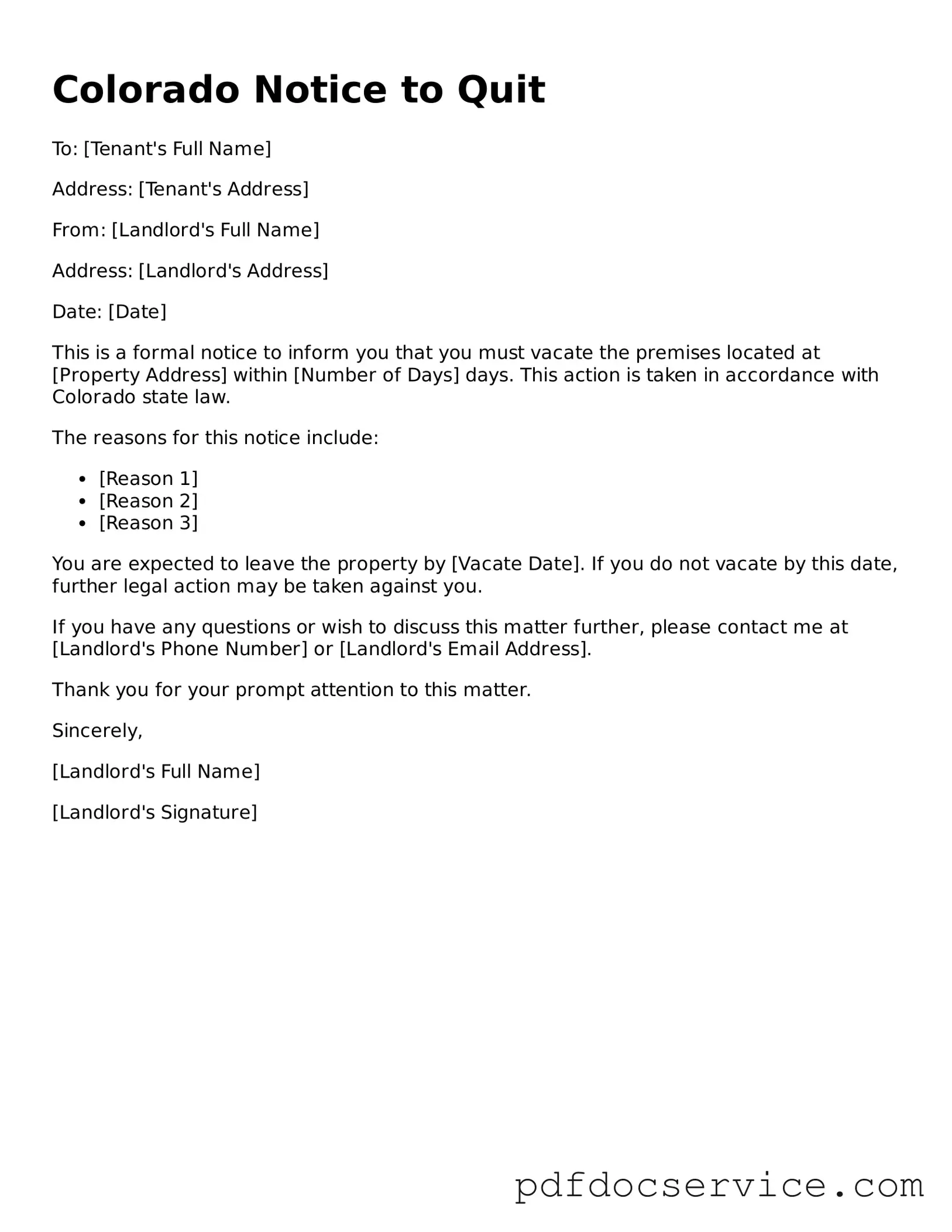The Colorado Notice to Quit form is a legal document used by landlords to inform tenants that they must vacate the rental property. This notice is typically issued when a tenant has violated the lease agreement or failed to pay rent. It serves as a formal request for the tenant to leave the premises within a specified time frame.
When should a landlord use a Notice to Quit?
A landlord may issue a Notice to Quit for several reasons, including:
-
Non-payment of rent.
-
Violation of lease terms.
-
Illegal activity on the premises.
-
Failure to maintain the property in accordance with the lease.
Each reason has its own specific requirements and time frames for notice, which must be adhered to in order to proceed with eviction.
The Notice to Quit should include the following information:
-
The date of the notice.
-
The tenant's name and address.
-
The reason for the notice.
-
The date by which the tenant must vacate the property.
-
The landlord's contact information.
Providing clear and accurate information is essential for the notice to be legally valid.
How much notice is required before a tenant must vacate?
The amount of notice required can vary based on the reason for the eviction. Generally, the following time frames apply:
-
For non-payment of rent: 10 days.
-
For lease violations: 10 days to cure the violation or 30 days to vacate.
-
For illegal activity: 3 days.
Landlords must ensure they comply with these time frames to avoid complications in the eviction process.
Can a tenant contest a Notice to Quit?
Yes, a tenant has the right to contest a Notice to Quit. If a tenant believes the notice is unjust or the claims are unfounded, they can respond to the landlord and seek resolution. If the issue remains unresolved, the tenant may choose to defend themselves in court during eviction proceedings.
What happens if a tenant does not vacate by the deadline?
If a tenant fails to vacate the property by the deadline specified in the Notice to Quit, the landlord may proceed with legal action to evict the tenant. This typically involves filing an eviction lawsuit in court, where both parties can present their cases.
Is the Notice to Quit the same as an eviction notice?
No, a Notice to Quit is not the same as an eviction notice. The Notice to Quit is the initial step in the eviction process, informing the tenant of the need to vacate. An eviction notice is issued after the tenant has failed to comply with the Notice to Quit and legal action has been initiated.
